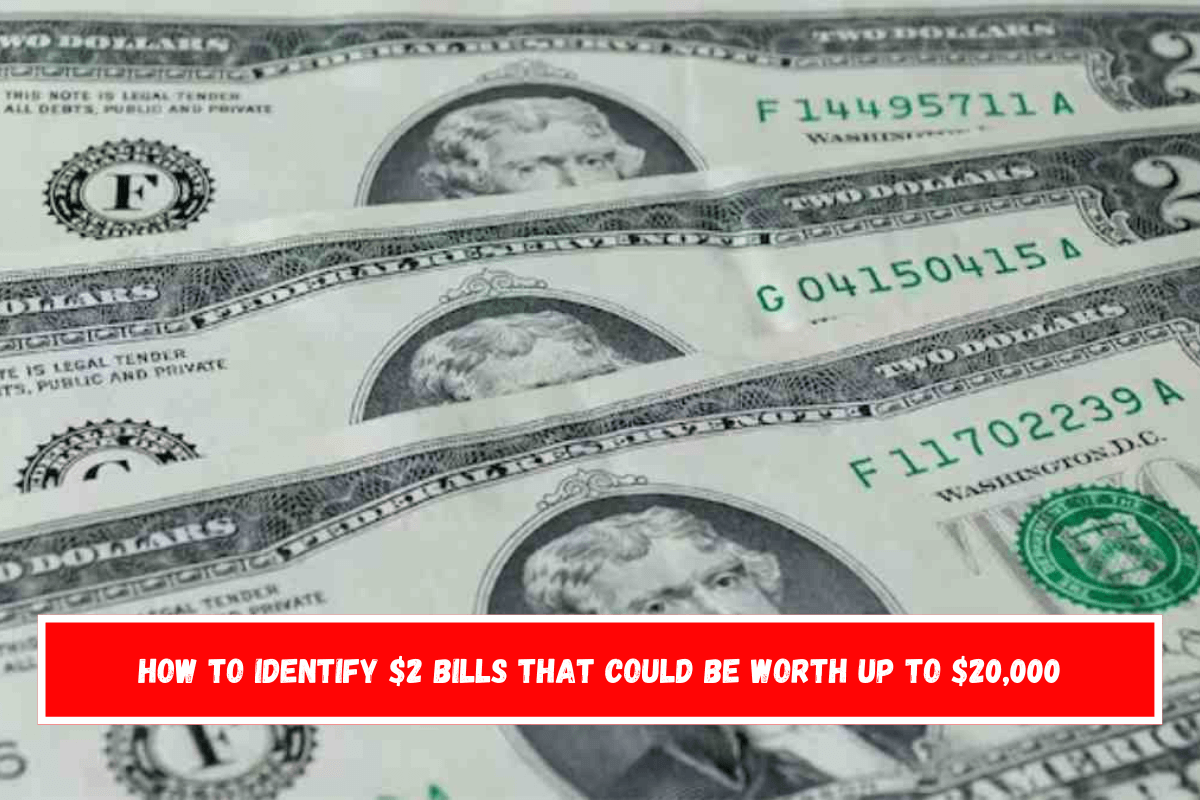While most coins and bills are only worth their face value, there are a few exceptions that collectors will pay hundreds of dollars for. One noteworthy example is certain $2 bills, which, due to their unique properties, might be worth up to $20,000. Let’s look at how you can tell if you own one of these precious artifacts.
According to MarketWatch, certain uncirculated $2 bills can fetch as much as $20,000. The main elements impacting their worth are:
- Serial Numbers
- The year the bills were printed
- Their overall condition
The serial number, which can be seen on both the left and right sides of the face of a bill and is frequently preceded by a letter, is a critical component that can considerably boost the value of a bill.
The Influence of Antiquity
Dustin Johnston, vice president of Heritage Auctions, told MarketWatch that “A serial number ‘1’ on a 1976 $2 bill could be worth $20,000 or more.” When it comes to collecting rare and precious currency, specific serial numbers can make a bill more desirable.
Among these are the interesting “ladder” and “solid” figures. A solid serial number is defined by its homogeneity, with the same digit repeated, such as 88888888888. A ladder number, on the other hand, stands out for its sequential arrangement, with digits arranged in ascending sequence, such as 12345678910.
Johnston, a well-known authority in the industry, told a financial portal that the age of a bill contributes significantly to its value. Currency printed before the 1920s, being more than a century old, frequently has a value substantially greater than its original face value.
Factors Affecting Rarity
However, the year a bill was printed is only part of the equation. The rarity of a banknote is also influenced by other factors, including:
- The total number of banknotes printed in a specific year
- The remaining number of banknotes still in circulation
These elements, when combined, can have a considerable impact on the currency’s rarity and thus its value. Collectors and aficionados are constantly on the lookout for these distinguishing characteristics, which make currency valuation and collection an intriguing subject.
When determining the worth of a bill, one important factor to examine is its condition. Presenting a wrinkled bill to a collector differs greatly from providing one that has been scrupulously maintained, or even classified as a collector’s item and tightly enclosed for preservation.

Key Factors in Determining the Value of a Bill or Coin
According to insights from the US First Exchange site, there are four distinct types of value that play a role in this assessment:
- Catalog Value
- Purchase Price
- Public or Retail Value
- Wholesale Value
Understanding Each Type of Value
The catalog value is the average price at which most people will sell a coin or note. The buying price is the amount that a dealer may be willing to pay. In contrast, retail value is the price at which a specific dealer would sell you a coin or note. Finally, wholesale value is the price utilized by dealers when they trade with one another.
The webpage highlights that the value of a coin or banknote is essentially determined by three factors: rarity, condition or grade of the object, and current market conditions, notably the degree of demand. The interplay of these factors determines whether a coin or banknote is worth more or less.
Also See:- New Social Security payments for 2025











Leave a Reply